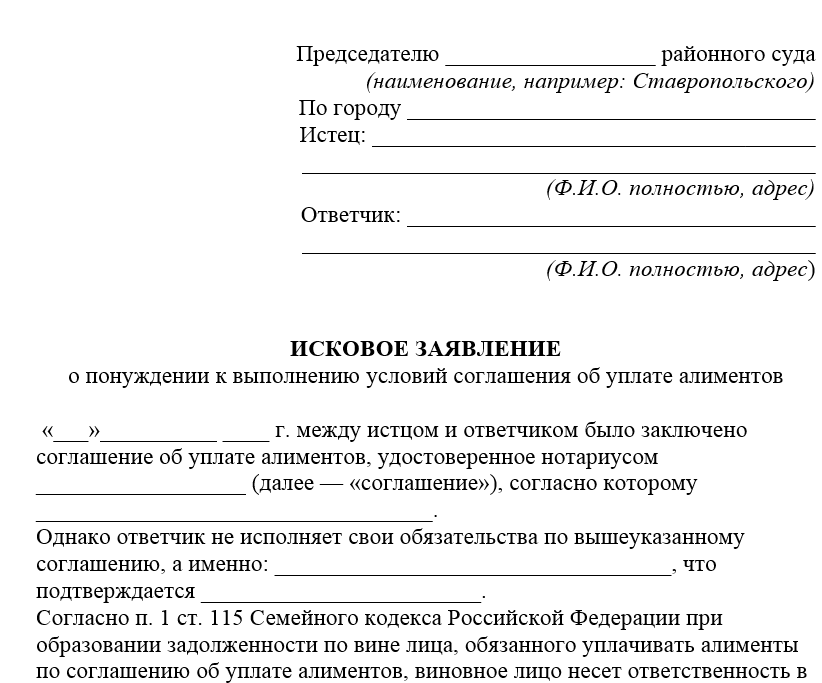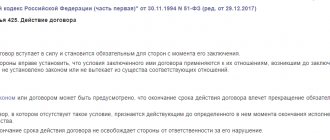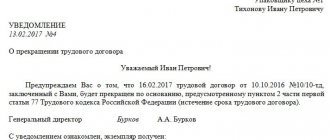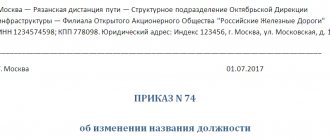Home/Children in Divorce/Agreement on Children in Divorce
After the official dissolution of a marriage, former spouses rarely remain living in the same territory and do not see each other often. If the couple does not have children together or the offspring have already reached adulthood, the separation process can be carried out in an expedited manner. If there is a minor child, divorce is carried out only through the court (Article 21 of the RF IC).
Attention! If you have any questions, you can chat for free with a lawyer at the bottom of the screen or call Moscow; Saint Petersburg; Free call for all of Russia.
For your information
Most parents, when filing a claim, try to immediately resolve the main issues related to the further residence and financial support of their children. To resolve disagreements regarding the place of residence and child support, court proceedings are not always necessary. If the parties do not have differences in the divorce, the spouses can draw up a written agreement about the children.
Who draws up a child agreement in a divorce?
The terms of the agreement regarding children in a divorce are negotiated primarily by the parents. If the procedure is carried out out of court, it is advisable to entrust the drafting of the text to a practicing lawyer who specializes in family disputes.
In the settlement agreement that the parties enter into during the trial, the list of issues for settlement is suggested by the judge, but the terms themselves are determined only by the parents. At the same time, it is important that the provisions of the agreement on children in the event of a divorce do not contradict current legislation.
For your information
If the couple’s offspring have reached 10 years of age, it will be necessary to seek permission from minors for a number of nuances (Article 57 of the RF IC). Children do not deal with issues of financial support during a divorce, but they can influence the order of meetings and cohabitation when drawing up an agreement. For example, if a 12-year-old boy categorically does not want to meet with one of his parents after the divorce, it will be impossible to force the offspring. Therefore, it is simply pointless to introduce conditions that do not respect children’s rights into the text of the agreement.
How to certify an agreement on the residence of children after a divorce with a notary
If the document stipulates alimony obligations, the court will not accept it without certification by a notary. A notarized agreement acquires legal force.
The procedure for certifying an agreement on children with a notary:
- Choosing a notary.
- Providing the specialist with the text of the agreement and the necessary documentation.
- Waiting for preliminary registration. The process will take 2-3 hours.
- The parties appear before the notary at the appointed time. If a minor child is over 10 years old, his presence is desirable.
- The notary reads the text. The parties sign three copies of the agreement (one copy remains with the notary).
- Payment of state duty.
Benefits and disadvantages
Concluding an agreement on children during a divorce has its undoubted pros and cons. Part of the content of the text depends on the form and procedure for drawing up the contract.
Advantages of an agreement on children during divorce:
- Parents can establish in the contract any conditions that are convenient for both parties to the divorce process. If the issues of the maintenance and place of residence of children are regulated in court, when making a decision, officials will be guided only by the rights and obligations enshrined in the RF IC and other normative acts: resolutions of the Plenum and the Constitution. For example, if according to the law one child is entitled to alimony in the amount of 25% of the parent’s income, during the divorce process this exact amount will be assigned. If necessary, the parties can independently agree to change the amount of child support.
- Stakeholders will be able to save their time. Contacting a lawyer and notary also requires expenses, but during litigation, the review process can drag on for a very long time and entail additional costs in finances, hours and nerves.
- Maintaining psychological comfort. Lengthy legal proceedings in which children become the object of dispute can lead to psychological trauma for the child. Thanks to an agreement on children, disagreements during a divorce can be resolved quickly and without the involvement of strangers.
Of course, concluding an agreement is not at all necessary.
It is permissible to simply verbally voice the conditions of future residence and maintenance, but in this case, if a conflict arises, it will not be possible to refer to the existing agreement.
For example, if after a divorce one of the parents stops paying child support, the money can be forcibly recovered, but only if the amount and procedure for payment were determined in an agreement or according to a court decision. When there is no explanatory document, the fact of non-payment will still need to be proven.
An agreement on children during a divorce also has one negative point: the terms of the deal cannot be revised and/or canceled unilaterally. At the same time, the provisions must be implemented as strictly as a court decision. To make changes, it will be necessary to achieve unity between the parties and draw up a new document. If the first agreement was written and notarized, the new version with changes must also be registered (Article 101 of the RF IC).
Attention
When it is not possible to reach an agreement on divorce, there is only one way out - going to court.
Ways to draw up an agreement
An agreement regarding children during divorce can be concluded in written or oral form. It is advisable that the agreement be written down on paper and certified by an authorized person. The classic option for resolving the issue is a simple written agreement drawn up by the spouses independently or with the help of a lawyer and certified by a notary.
A children's agreement can be signed at any time during the divorce process and after the dissolution of the marriage.
If the spouses have already filed a claim and questions about the further place of residence, maintenance and communication of the minor are considered in court, there are two options for further formalizing the agreement:
- Agreement in court. It is drawn up if during the hearing the parties came to a compromise. In this case, it will be a standard document with the only difference that the text will not require notarization. The correctness of the drafting and legality of the agreement in court regarding children will be certified by the representative of the authorities who is considering the divorce case. Further, the contract is binding. The terms of the transaction can be revised only by mutual written notarial agreement or in court (Article 153.10 of the Code of Civil Procedure of the Russian Federation).
- Oral agreement of the parties. This method of registration does not involve presentation on paper. The terms of the agreement are recorded in the court record and the writ of execution after the court decision is made.
A verbal agreement regarding children during a divorce must also be respected.
What issues can be settled by agreement upon divorce:
- Amount and procedure for providing child support.
- Place of further residence of the child and the order of meetings of the second parent with him.
The parties can immediately consider all issues about children within the framework of one agreement during a divorce or draw up a separate agreement for each provision: place of residence, maintenance, communication schedule. It is also possible to resolve only one problem (for example, the procedure for processing alimony), and to reach a compromise in words on all others. The content of the agreement regarding children is determined by the parents.
For your information
Without fail, issues of place of residence, alimony and communication schedule with the child are resolved only if one of the parties files a corresponding statement of claim with the court.
Drawing up an agreement
The agreement is drawn up in writing on behalf of the two parties (the recipient of alimony and the payer of alimony) indicating the full name. and addresses of registration and actual residence. The text of the agreement must indicate the circumstances and conditions on the basis of which the parties enter into an agreement. In the agreement on the collection of alimony for minor children, the recipient of alimony may indicate the following amount of alimony:
- for one minor child - in the amount of one quarter of all income
- for two children - in the amount of one third of all income
- for three or more children - half the earnings or other income of the parents,
Also, the recipient of alimony may indicate the collection of alimony in a fixed amount.
For other claims for payment of alimony, the penalty is presented in a fixed amount of money. After drawing up the agreement, the alimony recipient and the alimony payer, expressing their agreement with the terms of the agreement, seal it with their own signatures. The draft contract agreement is subject to notarization.
Documents for an agreement on a child in case of divorce
To formalize an agreement regarding children in a divorce, certain documents will be required. The list of papers for registration may vary depending on the list of issues being considered during divorce. The parties must prepare and submit:
- Text of the agreement. It is advisable that the document be drawn up by a professional lawyer. This will help to avoid future disputes regarding the legality of the agreement on children in the event of a divorce.
- General passports of both parents.
- Child's birth certificate. If the child has reached the age of 14, a teenager’s passport will be additionally required upon conclusion. If the child has been adopted, an adoption certificate will be required.
- Income certificates from both participants. If the parents are employees, the parties will need to draw up a document at work in Form 2 of the personal income tax. Entrepreneurs must provide a certificate in Form 3 of personal income tax. If one of the parents is a pensioner, such a document will be issued by the Pension Fund. Students can obtain a certificate of income at their place of study.
- Certificate of marriage or divorce (if the parties to the agreement on children have already divorced).
- Certificate of family composition. A document on the number of persons living at one address can be issued at the passport office at the place of residence of the parties to the agreement.
Income certificates are needed only if the issue of child support is being resolved.
Contents of an agreement regarding children during divorce
Current legislation does not regulate the clear content of an agreement on children, unlike, for example, a statement of claim. This document is drawn up by analogy with other legal documents.
The children's agreement must include the following information:
- The names of the parties to the agreement - the parents, their full names, passport details, registration and residence addresses, as well as information about the marriage.
- Information about the child (children) – full name, date of birth.
- List of issues that are established by the agreement. It is better to present them point by point, each one specified in as much detail as possible.
- Rights and responsibilities of each parent.
- The procedure for resolving disputes.
- Duration of the agreement.
- Signatures of the parties.
The following points of the agreement can be highlighted:
- the child’s place of residence and which parent he will stay with;
- the procedure for communicating with a parent living separately;
- the limits of participation of a separate parent in the upbringing of a minor;
- issues of financial support for the child, participation of the parent in the expenses of the child;
- the procedure for communication with him by close relatives (grandparents) of a parent living separately.
Expert opinion
Nikolaev Petr Ivanovich, expert on the assignment and payment of alimony
If you have any questions, ask them to me.
Often the text is compiled in free form, where you discuss all the important issues. If you have any difficulties, you can tell me.
Agreement on the residence of children during divorce
The need to draw up an agreement on the place of further residence of the child during a divorce may be dictated by various reasons. First of all, the parties to the contract want to be sure that the baby will have a home and the care of a specific parent.
Also, the drafting of a deal between spouses may be dictated by fears that one of the parties will subsequently demand unilateral custody of the child.
The agreement on children simplifies the mechanism of interaction with the guardianship and trusteeship authorities during a divorce. You will need to obtain permission for the contract from government officials.
If a child has property, his property until adulthood is managed by the person with whom the child remains to live (Article 28 of the Civil Code of the Russian Federation).
For your information
As a rule, after a divorce, children remain with their mother; the father can influence their movement only when traveling abroad. In the terms of the agreement, it can be stated that one of the parents does not have the right to change the child’s place of residence without notice and other important nuances for the participants (Article 65 of the RF IC).
The procedure for concluding an agreement on children during a divorce:
- The parties agree on the terms of the document. If the child is already 10 years old, his opinion is asked about his place of residence. This is confirmed by the rights of children in divorce.
- The text of the agreement on children in case of divorce is drawn up.
- The document is certified by a notary.
If the contract does not stipulate special conditions, it comes into force from the moment of notarization.
The following information should be included in an agreement regarding children in a divorce:
- Title of the document.
- Basic information of both parents (full name, date of birth, place of residence, passport details).
- Information about the child (full name, date of birth).
- Living conditions of a minor after divorce (at what address and with which parent will he live).
- Procedure for notification when changing a child’s place of residence.
- When and how much time the other party can spend with the children. Possibility to take your child on vacation. Some clauses of the agreement regarding children are optional and are included individually at the discretion of the parties to the divorce.
- Date of approval.
- Signatures of the parties with transcripts.
Additionally, the text can provide for the conditions for the entry into force of the contract and potential penalties for violating the provisions.
The possibility of drawing up an agreement on the place of residence of children during a divorce is enshrined in Art. 65 RF IC. If the divorce process begins after the creation of the contract, the document must be presented to the judge as evidence of the existence of a transaction (Article 24 of the RF IC).
A sample agreement on determining the child’s place of residence and exercising parental rights in relation to him is available.
Agreement
on determining the child’s place of residence
and the procedure for exercising parental rights
Father living separately from the child
(Parents live in different countries)
Moscow
April 2, 2013
Citizen Artemyev Roman Semenovich, hereinafter referred to as “Father”, and citizen Artemyeva Yulia Mikhailovna, hereinafter referred to as “Mother”, and together referred to as “Parents”, in accordance with Articles 65, 66 of the Family Code of the Russian Federation, signed this agreement as follows:
Agreement on child support upon divorce
It is advisable to record the procedure and amount of child support upon divorce in writing: using a notarial agreement or a court decision. If confirmation is not made, in the future, if one of the parents refuses to provide financial assistance, it will be difficult to recover money for the missed period. The issue of determining the amount of alimony upon divorce is covered by Art. 81 IC RF.
If the parties do not have any disagreements regarding the issue of financial support for children, it would be wiser to enter into an agreement during the divorce. Under the terms of the agreement, the participants can establish any amount and procedure for providing alimony (Article 103 of the RF IC).
IMPORTANT
The provisions of the agreement must not conflict with current legislation. The amount of payments determined by agreement cannot be lower than what would be provided by a court decision.
Art. 81 of the RF IC establishes the following amounts of alimony in case of divorce:
- One child is entitled to 25% of their income.
- For two children - 1/3 of income (approximately 33%).
- For three or more children – ½ income.
It must be taken into account that if children are from different marriages, then the parts due to them by law are divided in equal proportions. Cash payments are collected from all types of income except targeted funds. The alimony provider must provide monthly payments according to the schedule specified in the children's divorce agreement.
For your information
Deviation from the above norm is possible if the payer’s income is unstable or it is not feasible to regularly determine the amount of income. For example, an individual entrepreneur submits financial statements no more than once a quarter. In this case, it is allowed to assign alimony in a fixed amount and not pay it monthly (Article 83 of the RF IC).
The procedure for concluding an agreement on child support upon divorce:
- The parties agree on the payment of alimony and collect the necessary package of documents.
- The text of the document is compiled.
- The agreement is certified by a notary. If there are no special conditions in the text, it comes into force immediately after certification.
An agreement on children in a divorce does not have a strictly defined form and is drawn up arbitrarily. There are mandatory elements that must be in the text:
- Document's name.
- Basic data of the alimony provider (full name, date of birth, place of residence, passport details).
- Information about the child (full name, date of birth, registration and actual place of residence).
- Degree of relationship between the defendant and the payer.
- Basic data of the representative of the alimony recipient, i.e. the parent with whom the child remains to live in the event of a divorce (full name, date of birth, place of residence, passport details), the type of relationship with the person who has the right to payments.
- Amount and frequency of remuneration (in numbers and in words), for example, monthly.
- The procedure for transferring funds (in person, to a bank account, to a card).
- The collection procedure and the amount of the penalty in case of violation of the conditions. In the absence of this clause, a penalty will be charged under Art. 115 RF IC.
- The procedure for indexing alimony payments. If there are no instructions in the text of the agreement on this matter, the recalculation of the salary will be done in accordance with Art. 117 RF IC.
- Duration of the agreement on children in case of divorce. Child support is required until the child reaches the age of majority, but the text can establish payment obligations while the child is studying at a university, etc.
- Additional terms and conditions (if any).
- Conclusion date.
- Signatures of the parties with transcripts. Both the payer and the recipient's representative provide their assurance.
If the child has reached the age of 14, the document is concluded on his behalf, but with the consent of the official guardian (Article 99 of the RF IC). A minor citizen independently signs the text.
A sample agreement on financial support for children during divorce is available.
How to draw up an agreement on the residence of children after divorce
There is no universal template for an agreement regarding children. Since the circumstances of divorce proceedings are always different, the document is drawn up in any form. Its main principle is a focus on the well-being of the child. The interests of parents remain in the background.
An important condition is compliance with the current legislation of the Russian Federation. If any clauses in the contract diverge from the law, the entire document is considered invalid. For example, you cannot prescribe a ban on meetings between the second parent and the child.
Form and content of the document
The document prescribes ways to solve social and domestic issues. First of all, we are talking about the child’s place of residence. Issues related to the child’s financial support are also resolved.
The document contains information about the parents (full name, date of birth, place of residence, passport details), information about the child (full name, date of birth). The date for concluding the contract is set. Signatures of both parties with a transcript are also required.
What issues are covered in the agreement on children:
- Which parent will the child live with after the divorce process?
- On what days the second parent will visit the child and where exactly the communication will take place is determined by the number of hours.
- The right to resolve issues that are important for the child’s future life (for example, transferring the child to another school or moving him to another area, etc.).
- The right to receive information regarding the child’s studies or health status.
- The amount allocated by the second parent per child per month. A certain percentage of income may be set.
- The amount of assistance in purchasing expensive property for a child.
Sample agreement on the child’s place of residence after divorce
Do not write the document in a short form. It should also not contain ambiguous language. The more detailed and accurate everything is spelled out, the fewer conflict situations will arise in the future.

Agreement on the procedure for communication between the second parent and the child
According to Art. 66 of the RF IC, both parents have equal rights to participate in the life of the child and to communicate with him. To ensure that the agreements will not be violated during a divorce and the parties will not interfere with meetings, the participants can draw up a written agreement on communication with children.
For your information
Also, the need to conclude an agreement may be caused by the nuances of personal relationships. Each of the former spouses, after the divorce, can create a new family and not want spontaneous meetings with their former marriage partner.
Stages of concluding an agreement on the procedure for communication with the child of the second parent during a divorce:
- The parties determine a schedule of meetings and participation in the child’s life and collect a package of documents.
- The next step is the drafting of the text by the parties to the agreement.
- Notarization of an agreement on communication with children during a divorce.
There is no single form of document provided. The contract is drawn up randomly and contains the following information:
- Title of the document.
- Basic data of the parties (full name, date of birth, place of residence, passport details).
- Meeting schedule: frequency, duration.
- Basic data of the child (full name, date of birth, place of residence).
- The need or absence of mandatory third party supervision during meetings.
- A place of communication.
- Possibility of communication outside the established schedule (by telephone, via the Internet).
- Regulations for participation in the child's life. For example, a mandatory joint decision on a place of study or recreation.
- The procedure for providing all necessary information regarding a minor (location, telephone number).
- Responsibilities of the parent to comply with the daily routine and instructions of the child’s attending physician.
- Additional conditions, individual for each case (if any).
- Date and signatures of the parties with transcript.
A sample agreement on the procedure for communication between the second parent and the child during a divorce is available.

Do I need to have a children's agreement notarized?
The law does not oblige parents to sign a written agreement about children during a divorce and notarize the document. Adults can care for offspring based on a verbal agreement. If the parents decide to sign an agreement and want the document to have legal force, the agreement must be notarized (Article 100 of the RF IC). Otherwise, if controversial issues arise, it will not be possible to refer to the terms of the agreement on children in court during a divorce. They simply won’t take the document into account.
IMPORTANT
There is one contract option when notarization is not required. The settlement agreement is signed during the court hearing. The legality of such a document is certified by a judge.
When is an agreement regarding the residence of a child after a divorce concluded?
In a divorce, parents are usually given the same rights and responsibilities towards their children.
The agreement on the residence of a child after divorce is concluded:
- before trial;
- during the trial;
- before the verdict is rendered.
In the latter case, we are talking about oral agreements reached as part of the legal process. In this case, the court stops the process and waits for the conclusion of an agreement. Oral agreements may also be recorded in the minutes. Thus, the court confirms the seriousness of their intentions.
How to certify an agreement regarding children during a divorce?
The procedure for notarizing an agreement on children during a divorce is very simple:
- You need to decide on the choice of a notary and come during the office hours.
- Show the specialist the approximate text of the agreement and a package of documents for verification (one of the parties can do this). The pre-registration procedure does not last long. Typically, the process takes a couple of hours.
- At the appointed time, the parties appear before the notary. If the child is over 10 years old, then the presence of a minor is desirable (Article 57 of the RF IC).
- The notary reads the text of the agreement on children during a divorce, the parties read the agreement again and sign three copies of the document. One copy remains with the lawyer.
- Then the spouses pay the state fee and pick up their documents.
Please note
: Usually the entire procedure can be completed within one day.
What is a children's agreement in divorce?
We are talking about an official document that stipulates the issues of subsequent residence, upbringing and financial support of children after a divorce. A settlement agreement is concluded between parents on a voluntary basis.
Reasons for entering into an agreement regarding children:
- Both parents want to make sure that the baby will receive the necessary care and will have a permanent place to live.
- One of the parties fears that the other party will subsequently proceed to formalize unilateral guardianship.
- Simplification of interaction with guardianship and trusteeship authorities.
- Speeding up the divorce process. Parents demonstrate that they are committed to peaceful dialogue.
- Concretization of oral agreements. Each spouse clearly and clearly understands what exactly he is responsible for.
The procedure for approving an agreement about a child in court

During divorce proceedings where the issue of children will be considered, the parties may reach an amicable agreement. In this case, the participants have two ways to formalize their agreements:
- Compose a written text.
- Make a joint decision within the limits of a verbal agreement.
Procedure if the parties plan to draw up a written agreement about children in court:
- The plaintiff and defendant inform the government representative about the reached consensus.
- The hearing is rescheduled for another day.
- The parties independently or with the help of a lawyer draw up the text of the agreement.
- At the next hearing, the document is handed over to a government representative.
- If the agreement regarding the children does not raise any objections, the judge will approve it.
- The case is closed due to the reconciliation of the parties.
The procedure for concluding and certifying a settlement agreement regarding children in a divorce is determined by Art. 153.10 Code of Civil Procedure of the Russian Federation.
The plaintiff and defendant may not sign a written agreement. If during the meeting the parties came to a compromise, for example, agreed on the amount of alimony, this fact is entered into the protocol. Then the judge makes a decision and creates a writ of execution for the case, which is sent to the bailiff.
Cost of registration and terms of entry into force
For notarization of an agreement on children during a divorce, the parties will need to pay 250 rubles. (Article 333.24 of the Tax Code of the Russian Federation). Drawing up the document by a specialist is paid separately. There are no clear tariffs for such a service. As a rule, the cost of drawing up and approving an agreement on children during a divorce ranges from 1 thousand to 5 thousand rubles.
IMPORTANT
The terms for the entry into force of the agreement can be stipulated by the parties in the text itself. If this time is not specified, the agreement comes into force immediately after notarization.
When can a court reject a child care agreement?
A judge does not recognize the legality of an agreement on children during a divorce in the following cases:
- The document conflicts with current Russian legislation (Article 422 of the Civil Code of the Russian Federation).
- The terms of the contract violated the rights and interests of the child (Article 102 of the RF IC).
- Forged documents were used when signing the agreement.
- The text contains gross errors and/or inaccurate information.
To avoid such problems, it is advisable to have a divorce agreement drawn up by a professional lawyer.
Responsibility for non-fulfillment
Failure to comply with the terms of the agreement regarding children in a divorce entails penalties. The degree of responsibility for the violation will depend on the severity of the offense:
- Unfulfilled conditions included in the text of the contract
- The seriousness of the offense.
The issue of failure to comply with the terms of an agreement regarding children during a divorce can only be resolved in court, even if possible penalties are provided for by the provisions of the agreement itself.
This does not apply to the alimony agreement, because it has the force of a writ of execution and with such a document you can immediately contact the FSSP to the bailiffs (Article 100 of the RF IC).
The procedure for applying to the judicial authorities in case of non-compliance with the agreement on children in a divorce:
- Filing a claim. A citizen can apply both at his place of residence and at the place of residence or location of the defendant’s property, which is regulated by Art. 29 Code of Civil Procedure of the Russian Federation.
- The application will be considered within two months after submission. If the case is related to alimony, then it will take about a month to study (Article 154 of the Code of Civil Procedure of the Russian Federation).
- After the decision is made, the writ of execution is sent to the FSSP department, where the bailiff opens proceedings for non-compliance with the contract.
If the agreement to pay child support after divorce is not fulfilled, the defendant will be charged the amount of the debt and a penalty in the amount of 1/10 percent of the amount of the debt for each day of delay. In this case, the payer can provide evidence of the absence of his guilt (Article 115 of the RF IC).
For your information
If the divorce agreement on the place of residence and the participation of the parties in the lives of the children is violated, in some cases the children may be transferred to be raised by another parent. If the procedure for communicating with a child is not followed, the bailiff is obliged to create conditions for unhindered visits with a minor (Article 109.3 of the Federal Law of the Russian Federation No. 229 of October 2, 2007).
A sample statement of claim to compel compliance with the terms of the alimony payment agreement can be downloaded here.

Arbitrage practice
The practice of agreements regarding children during divorce in Russia is not great. More than 90% of such cases are initially considered in court. Once an agreement is drawn up, attempts to challenge the contract are rare. More often, the legislative bodies receive claims for non-compliance with the terms of the concluded document. Almost all appeals to the court in such cases are related to the payment of alimony.
Issues of meetings and place of residence of the child, as a rule, are resolved through verbal agreement or with the help of government representatives initially.








